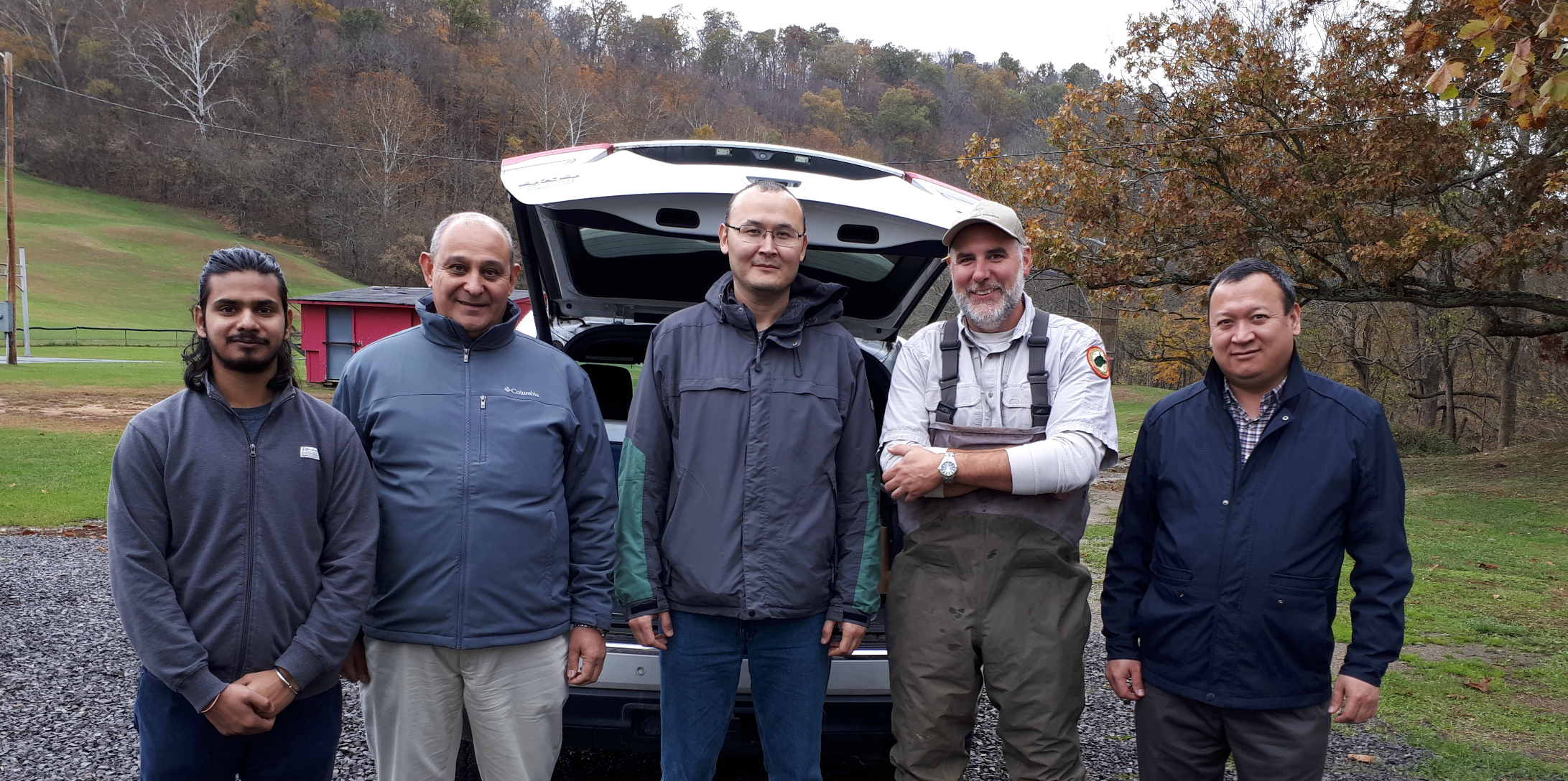This is the latest update from CAREC’s research mission to US on its PEER project (Please see our previous meetings with USGS-CaWSC, USDA-NSL and USAD). This time CAREC was hosted by the West Virginia University (WVU), specifically the Civil and Environmental Engineering (CEE) Department of the Benjamin M. Statler College of Engineering and Mineral Resources (SCEMR). Our research partners along PEER are Prof. Lin Lian-Shin and Dr. Jutla Antar. The visit consisted of two days.

Day 1, November 1 CAREC staff was welcomed by the Chair of the CEE Prof. Siriwardane Hema, Dean of the SCEMR Prof. Eugene Cilento and Associate Dean, Prof. David Wyrick and PdD and Post-Doctoral students of CEE.
After CAREC’s presentation of the its Central Asian initiatives, water problems and the PEER research details, Prof. Lin’s students presented their research on innovative wastewater treatment technologies from the mining industry using engineering, chemistry methods to improve energy-water nexus, use of iron and sulfur as green agents in wastewater treatment processes for CO2 sequestration, bioelectrochemical processes and revenue potential from wastewater treatment plants.
Dr. Antar’s students presented water and health, flood forecasting, satellite remote sensing applications in hydrology, satellite based predictability of water sensitive infectious diseases, food security in terms of nutritional adequacy (instead of calories, sum of energy bring nutrients analysis to the definition), climate change and issues of scales.
Afternoon session was dedicated to the detailed discussion of the “Provision of science based evidence on climate induced water quality challenges in Amu Darya basin” project. Specifically, tools and subsequent scenario development in terms of agricultural development in the Amudarya Basin and climate change were discussed in detail. Particularly use of QUAL2K, which is a river and stream water quality one dimensional model was agreed for the main stream, while SPARROW, a modeling tool for the regional interpretation of water-quality monitoring data. The model relates in-stream water-quality measurements to spatially referenced characteristics of watersheds, including contaminant sources and factors influencing terrestrial and aquatic transport. SPARROW empirically estimates the origin and fate of contaminants in river networks and quantifies uncertainties in model predictions. For above model, remotely senses land cover, land use, cropping patterns and fertilizer application data will be used. The WVU group will provide RS and GIS data and arrange access to the common data sharing cloud where partners can share data, papers and tools. Future possible cooperation on student exchange, organization and participation of joint conference and initiation of projects related to agricultural engineering, environment and health, dam safety and salinity reduction techniques.

Day 2, November 2 was dedicated to the Presentation of Nick Murray, WV Department of Environmental Protection’s Watershed Assessment Branch on methods and tools for water quality monitoring in West Virginia. This session was followed up by the field trip to the Dunkard Creek, where Mr. Murray demonstrated for CAREC researchers a sampling, measuring techniques by taking actual samples for water quality analysis. It was very useful and handy experience in terms of water quality monitoring, basin biological and habitat health.
CAREC appreciates its partners for warm welcome and hospitality and hopes that such exchanges will lead to larger initiatives to improve cooperation and capacity building of Central Asian researchers.
